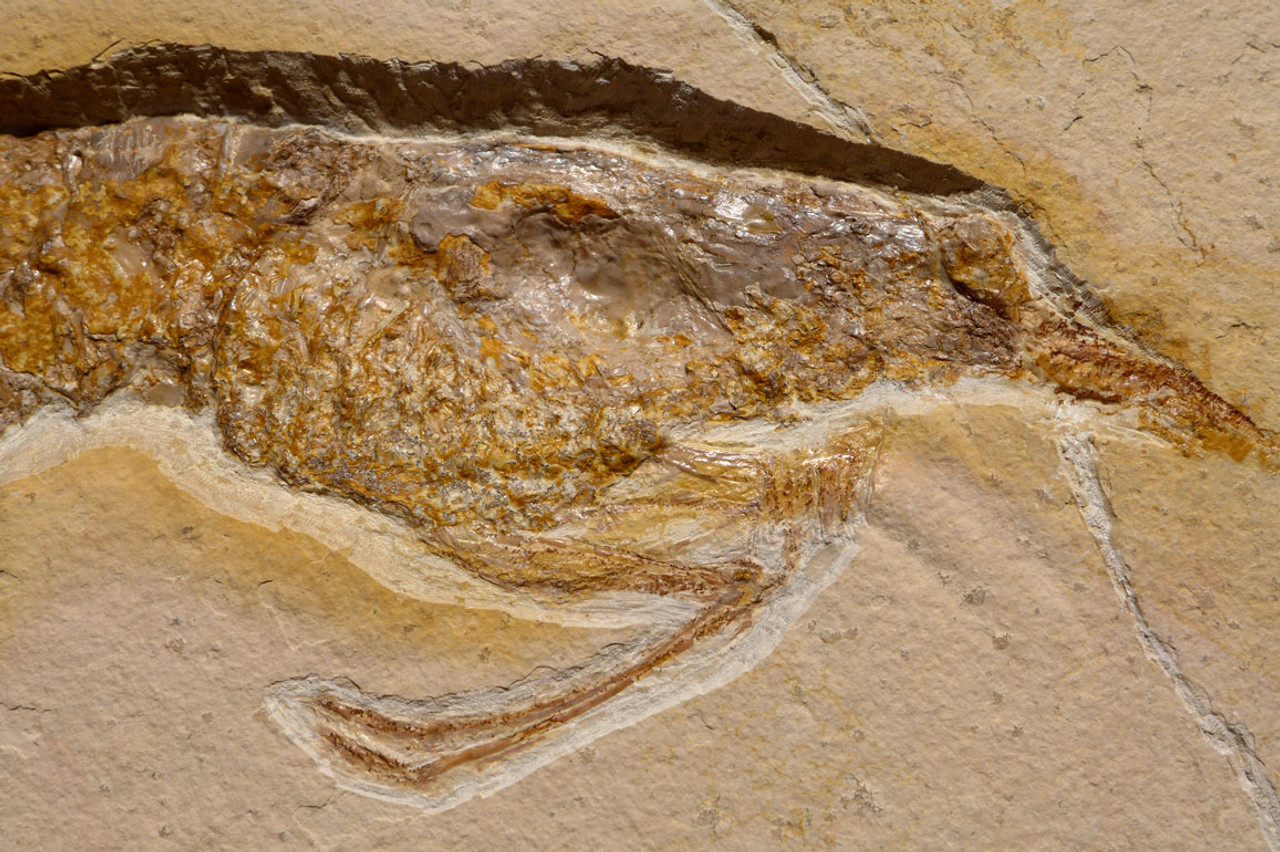Product Description
Famous for producing an astonishing diversity of rare and most intricately preserved fossils found anywhere in the world, the Solnhofen Lithographic Limestone Formation of southern Germany is legendary. In light of the quality of fossils that are found in the Solnhofen Formation, this is a MONSTER-SIZED Aeger sp. Jurassic extinct shrimp from Solnhofen. Fine quality Solnhofen fossils are now so rare that most come from old private collections as this specimen did. This is the finest preserved and best mineralized example we have ever seen. The entire upper edge and side is lined with dramatic mineral dendrites that give an appearance of underwater plants as the shrimp floats beneath. Fossils of this quality from Solnhofen have really become a rarity. This specimen is on a large slab of its original limestone.
HISTORY
Aeger is an extinct member of the diverse group of arthropods called DECAPODA. Decapods comprise lobster, shrimp, prawns and crabs. The majority of Solnhofen crustaceans are decapods. Of all Solnhofen decapod fossils, shrimp such as Aeger, are the most common and abundant but fine quality examples of Aeger are hard to come by as this specimen above. The Aeger shrimp is an extinct species of predatory marine crustacean. These marine creatures died out at the end of the Cretaceous Period.
Lobster, shrimp and prawns all possess an elongated, segmented body with a flexible carapace covering the thorax and head. Other basic traits are the presence of multiple pairs of limbs and a fan-like tail. Because of the lightness and loose articulation of a decapod's carapace, intact preservation of the entire creature is quite rare and the abundance of the animal in the fossil layers is most often represented by partial or poorly preserved specimens.
WARNING: Many crustacean fossils on lithographic limestone from both Germany and Lebanon ARE artificially enhanced in some way. This often occurs by painting on fine detail of appendages and antennae at the least all the way to painting an entire animal where one did not exist. A variety of sellers feature these heavily restored fossils being sold as '100% genuine' instead of being disclosed accurately. If you examine the images above and of the other crustacean fossils we offer in this section and compare the REAL detail of our specimens with what is shown in substantially lower-priced offers of some other dealers, you will easily see the difference if they post high-resolution images. Examples of some fake crustacean fossils can be seen here. The low price of one of these fossils with heavy restoration or of a pure fake is a FRACTION of what a real specimen. Quarry owners all over the world that produce these kinds of fossils are not stupid and all know the value of genuine, fine grade specimens and charge accordingly. The dramatic effect faking and enhancement has to the price of the fossil cannot be overstated.
 US DOLLAR
US DOLLAR
 EURO
EURO
 AUSTRALIAN DOLLAR
AUSTRALIAN DOLLAR
 CANADIAN DOLLAR
CANADIAN DOLLAR
 POUND STERLING
POUND STERLING








